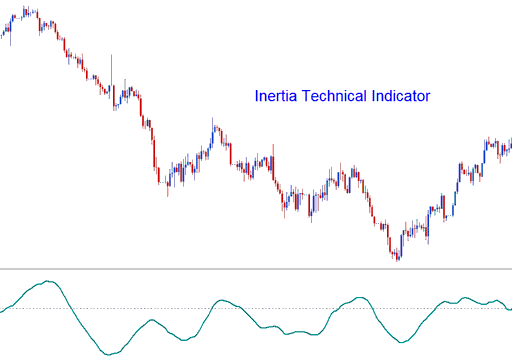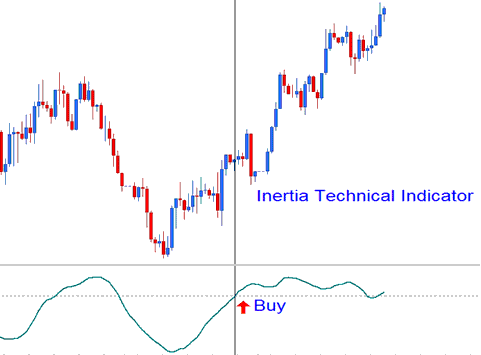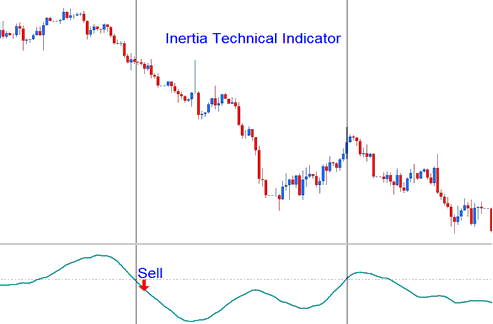Inertia Technical Analysis & Inertia Signals
Donald Dorsey made it, and it was first used for stocks and commodities, until traders used it to trade other markets with this indicator.
Dorsey titled it "Inertia" based on his view of market behavior. He posited that a market trend is fundamentally a manifestation of inertia: consequently, more energy is needed to alter a prevailing trend than to sustain it. Therefore, the measure of a price trend reflects this market inertia. This technical indicator operates as an oscillator, scaled from zero to one hundred. Trading signals are generated by employing a strategy that involves crossing the central line situated at the 50 mark.

In physics, the term Inertia is defined in terms of mass and direction of motion. Using standard technical analysis, the direction of motion of the trend can be easily defined. However, the mass can't be easily defined. Dorsey claimed that the volatility of a financial instrument may be the simplest & the most accurate measurement of inertia. This theory led to the use of the Relative Volatility Index (RVI) as the basis to be used as a trend trading indicator. Hence Inertia indicator is comprised of: RVI smoothed by a linear regression.
Gold Technical Analysis and Generating Signals
Trading with this indicator is straightforward. Signals are easy to read. Charts below show buy and sell examples using Inertia.
Bullish Buy Trading Signal
If the Inertia number is higher than 50, it means the inertia is positive, and this shows that the long term trend is going up as long as this number stays above 50. If the number goes down to below 50, it is seen as a signal to sell and stop trading. The picture here gives an example of how a signal to buy is made.

Upward Trend - Bullish Signal
Bearish Sell Signal
If the Inertia is below 50, negative inertia is indicated, this thence defines the long-term trend as downwards as long as the technical indicator remains below 50. If it crosses above 50 then this is interpreted and viewed as an exit trading signal. The chart below illustrates and shows how a sell trade signal generated.

Downwards Trend - Bearish Signal
Study More Tutorials & Courses:
- How to Use MT4 Alligator in MetaTrader 4 Software Platform
- Keltner Bands MT4 Indicator Shown
- RSI MetaTrader 5 Indicator Cross-over Signal
- How Do I Place S&P in MT5 S&P App?
- Drawing Fib Extension Levels on Upward and Downward Trend
- Hull Moving Average MT5 Indicator Analysis in Trading Charts
- How Do I Create & Write a Forex System Template?
- What's the Value of 100 Pips for Micro Account?
- Used Gold Leverage
- MT4 Parabolic SAR Indicator for Day Forex
